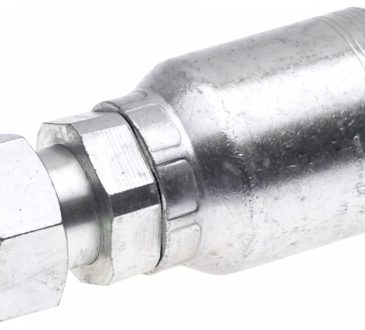When it comes to construction, manufacturing, or custom fabrication, selecting the right type of metal tube can make or break your project’s success. Metal tubes serve a wide variety of purposes — from structural support and fluid transport to decorative design and precision engineering. Each type of tube offers distinct advantages in terms of strength, flexibility, and corrosion resistance.
To ensure your project performs reliably and efficiently, it’s essential to understand the different tube materials, their properties, and how to match them to your specific needs. Let’s explore the key factors to consider when choosing the right metal tubes for any application.
1. Understanding the Role of Metal Tubes
Metal tubes are hollow cylindrical components designed to carry fluids, withstand pressure, or serve as structural frameworks. They are used across industries such as construction, automotive, aerospace, and plumbing. Depending on the project, tubes can vary widely in material composition, thickness, and diameter.
The right tube must balance durability, performance, and cost-effectiveness. Whether you’re designing a lightweight structure or a high-pressure system, choosing the appropriate metal type is the foundation of success.
2. Types of Metal Tubes and Their Uses
Different materials offer unique benefits, so understanding the basic types is the first step toward making an informed decision.
2.1 Steel Tubes
Steel is one of the most popular choices due to its exceptional strength and versatility. It’s ideal for heavy-duty structural applications such as building frames, bridges, and machinery. Depending on the coating and alloy, steel tubes can also resist corrosion and handle extreme conditions.
2.2 Stainless Steel Tubes
Stainless steel offers superior resistance to rust and oxidation, making it perfect for food processing, marine environments, and medical equipment. Its sleek finish also gives it aesthetic appeal for modern architectural designs.
2.3 Aluminum Tubes
Lightweight yet strong, aluminum tubes are commonly used in automotive, aerospace, and transportation industries. They provide excellent corrosion resistance and thermal conductivity, which makes them ideal for heat exchangers and lightweight frameworks.
2.4 Copper and Brass Tubes
Copper and brass are known for their conductivity and ease of shaping. They’re typically used in plumbing, electrical systems, and decorative applications. While copper resists corrosion and bacteria, brass offers a polished appearance and good machinability.
3. Selecting the Right Tube Shape
The cross-sectional shape of a tube significantly affects its performance and suitability for different projects.
- Round Tubes: Commonly used for structural strength and fluid transport. They evenly distribute stress and are ideal for pipelines and scaffolding.
- Square Tubes: Offer enhanced load-bearing capability and are often used in frameworks and furniture.
- Rectangular Tubes: Provide stability and strength in construction where flat surfaces are required.
- Oval or Custom Shapes: Used for specialized designs, especially in automotive and architectural applications.
Your choice should depend on how the tube will interact with other materials, the load it will bear, and the desired appearance.
4. Wall Thickness and Diameter Considerations
The strength and rigidity of metal tubes depend largely on their wall thickness and diameter.
- Thicker walls provide greater load-bearing capacity and are suitable for heavy-duty applications such as industrial piping and construction frameworks.
- Thinner walls are lighter and easier to shape, making them ideal for applications requiring flexibility or reduced weight, such as furniture or vehicle components.
Accurate sizing ensures both efficiency and safety, preventing failures under stress or pressure.
5. Corrosion Resistance and Environmental Factors
Environmental conditions should heavily influence your tube selection. If the project involves exposure to moisture, chemicals, or outdoor environments, corrosion resistance is key.
Stainless steel and aluminum are excellent choices for humid or marine conditions, while galvanized steel offers protection for outdoor use. For interior applications, untreated steel or copper may be suitable if properly maintained.
6. Fabrication and Welding Compatibility
Different metals react differently to fabrication processes like welding, cutting, or bending. For example, stainless steel requires specialized welding techniques, while aluminum demands precise temperature control to prevent warping.
Always verify whether your chosen tube material is compatible with the fabrication method your project requires. Working with professionals or suppliers who understand these technical details ensures seamless results.
7. Budget and Longevity
Your budget should balance initial costs with long-term performance. While high-quality materials like stainless steel or aluminum may have higher upfront costs, their resistance to wear and corrosion often results in lower maintenance expenses over time.
In contrast, carbon steel tubes may be more affordable initially but might require regular upkeep or protective coatings to prevent rust.
8. Application-Specific Selection
The correct tube depends largely on how it will be used:
- Construction: Steel or galvanized tubes for durability and load support.
- Automotive/Aerospace: Aluminum or titanium for lightweight strength.
- Plumbing: Copper for corrosion resistance and sanitation.
- Industrial Systems: Stainless steel for high-pressure and high-temperature performance.
Evaluating these application needs ensures the best combination of performance and cost efficiency.
9. Sourcing from Reliable Suppliers
Choosing a trustworthy supplier is just as important as selecting the right tube material. Reputable suppliers ensure consistent quality, accurate specifications, and reliable delivery timelines. They also provide technical support and customization options tailored to your project’s needs.
A trusted name like tubes métalliques Stealth Pipe and Steel exemplifies the quality and dependability professionals look for. With a strong focus on precision manufacturing and customer satisfaction, such suppliers ensure you get materials that meet both engineering standards and project demands.
10. Final Thoughts: Building with Confidence
Selecting the right metal tubes isn’t just about material — it’s about aligning strength, durability, and purpose. Every project, whether industrial or architectural, relies on the correct balance of performance and design compatibility.
By considering factors such as load capacity, environmental conditions, corrosion resistance, and supplier reliability, you can make confident decisions that ensure long-lasting results.
In the end, choosing high-quality metal tubes from a reputable source means investing in the safety, stability, and success of your project — a decision that defines not only the structure but also its future resilience.

